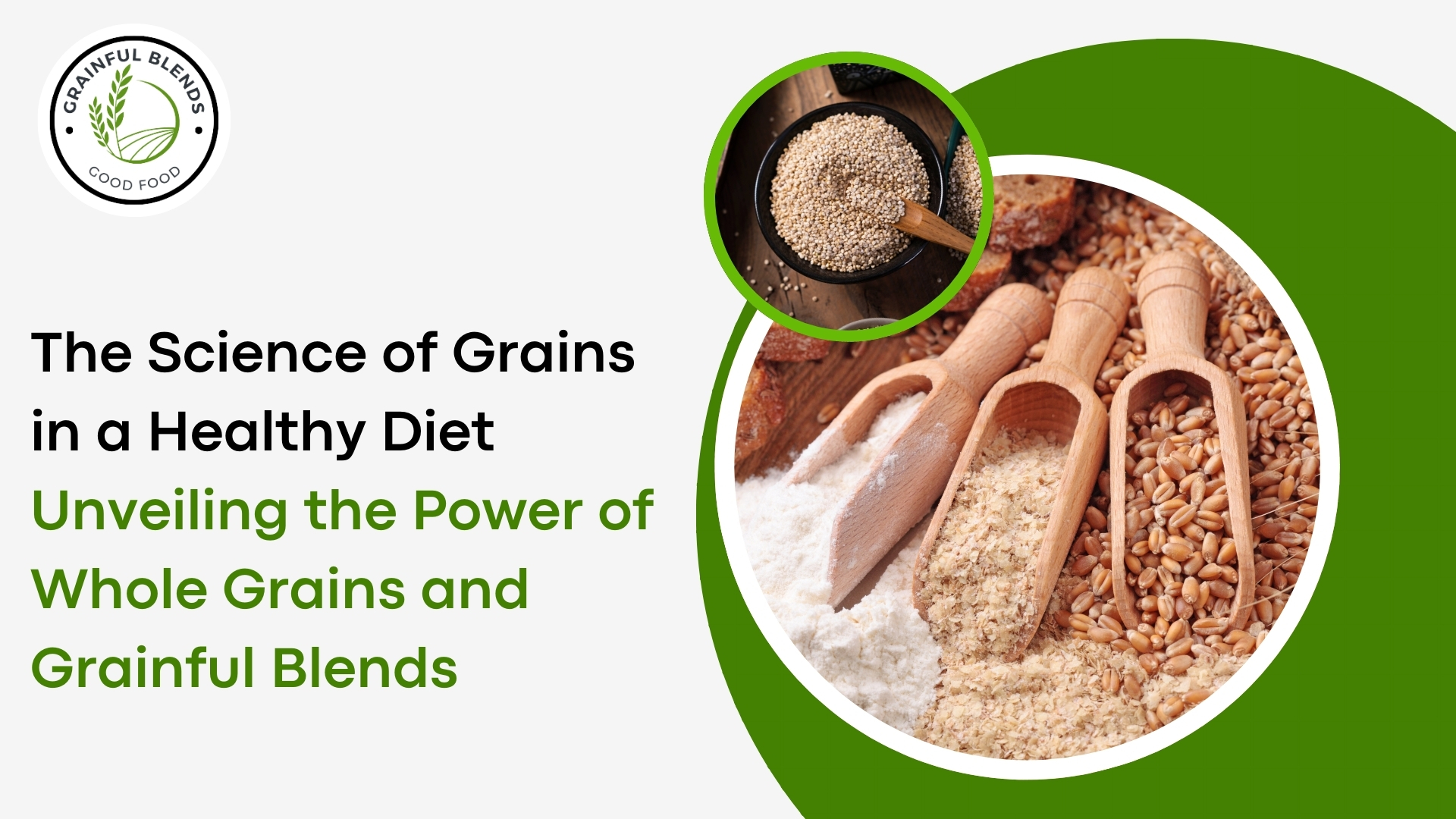The Science of Grains in a Healthy Diet: Unveiling the Power of Whole Grains and Grainful Blends
Introduction: Grains Through the Ages – From Ancient Staples to Modern Superfoods
Grains have fueled civilizations for millennia, evolving from ancient wheat to quinoa. Today, they’re at the heart of nutritional debates. This post unpacks scientific studies on grains’ role in health, addresses controversies, and introduces Grainful Blends—a modern solution for optimal nutrition.
Section 1: Types of Grains – Whole, Refined, Ancient, and Gluten-Free
Not all grains are created equal. Whole grains like oats and brown rice retain their bran, germ, and endosperm, offering fiber, vitamins, and antioxidants. Refined grains lose these nutrients during processing. Ancient grains (quinoa, farro) and gluten-free options (buckwheat, millet) are gaining traction for their unique health profiles.
Science Spotlight: A 2021 American Journal of Clinical Nutrition study found ancient grains have 20% higher antioxidant levels than modern varieties.
Section 2: Scientific Evidence – How Grains Boost Health
Keywords:
- Heart Health: A meta-analysis in Circulation linked 3 daily servings of whole grains to a 25% lower risk of cardiovascular disease, thanks to beta-glucan and lignans.
- Digestion: The fiber in grains fuels gut microbiota, reducing inflammation. A 2022 Gut journal study highlighted a 30% improvement in microbiome diversity with whole grains.
- Weight Management: Whole grains’ slow digestion curbs cravings. Research in Nutrition Reviews showed participants consuming whole grains had 10% lower BMI averages.
- Diabetes Prevention: The magnesium and fiber in grains improve insulin sensitivity. A Diabetes Care study noted a 22% reduced type 2 diabetes risk with daily whole grain intake.
Section 3: Debunking Myths – Are Grains Really the Enemy?
While keto and paleo diets villainize grains, science tells a different story. Refined grains (e.g., white bread) spike blood sugar, but whole grains stabilize it. For gluten-sensitive individuals, options like sorghum (featured in Grainful Blends’ Ancient Grain Medley) offer safe, nutrient-rich alternatives.
Expert Insight: The Harvard School of Public Health emphasizes that eliminating whole grains may deprive diets of essential fiber and B vitamins.
Section 4: Incorporating Grains – Tips and Grainful Blends’ Solutions
- Meal Prep: Swap rice with farro or freekeh for a protein boost.
- Breakfast: Stir steel-cut oats into smoothies.
- Snacks: Bake kale chips with quinoa.
Enter Grainful Blends:
- Ancient Grain Medley: A mix of quinoa, amaranth, and millet, rich in iron and protein. Perfect for salads or Buddha bowls.
- Quinoa & Lentil Blend: Combines plant-based protein with fiber for sustained energy. Ideal for post-workout meals.
- Steel-Cut Oatmeal Packets: Pre-portioned with chia and flaxseeds for a heart-healthy breakfast.
Section 5: Why Grainful Blends Stand Out
Grainful Blends simplifies nutrition with chef-crafted, non-GMO blends that balance taste and health. Their products cater to gluten-free, vegan, and busy lifestyles, aligning with 2023’s top trends: plant-based eating and functional foods.
FAQ Section
Q: Can grains aid weight loss?
A: Yes! Whole grains’ fiber promotes satiety. Try Grainful Blends’ Quinoa & Lentil Blend for a low-calorie, high-protein meal.
Q: What’s the healthiest grain?
A: Varied diets win. Rotate between oats, quinoa, and Grainful’s Ancient Grain Medley for diverse nutrients.
Conclusion: Embrace Grains for Lifelong Health
Science confirms whole grains as pillars of nutrition. With Grainful Blends, enjoying their benefits has never been easier.
CTA: Ready to upgrade your meals? Visit Grainfulblends.com for 10% off your first order!

